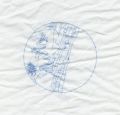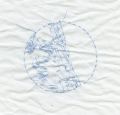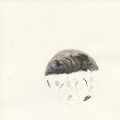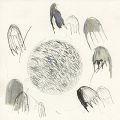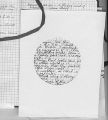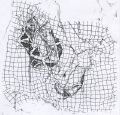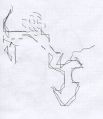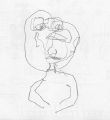One in two in many (working title)
They are not identical. Although they look exactly the same. They are pure graphite. Graphite twins. 123 mm long. 11.5 mm thick. Degree of hardness 2B.
But if I would look at them carefully, if I would study them in detail, I would be able to describe hundreds of differences. Thousands even. Tiny scratches, minute differences in shade and in the way they catch the light, traces of people who held them before me when they were still in a box in a shop.
The similarity is in their material and in their shape only. It is the quickness of my gaze that makes them one and the same thing. It is my human nature that makes me want to see the similarities first, that want to see them as one when they are two.
Two with one purpose though. They are used for drawing. And in their use they disappear. They transform into lines on paper. They become drawings.
I wonder. Can they become themselves again in drawing? Or more precise: can they become the other?
What will happen when I will use the one to draw the other? The other to draw the one? The one to draw the other? The other to draw the one? The one to draw the other? The other to draw the one? Until all the graphite has gone?
Media:The one to draw the other.pdf
"We who draw do so not only to make something visible to others, but also to accompany something invisible to its incalculable destination."
John Berger, Bento's sketchbook.
atlas drawings
microscope drawings
deconstructing a drawing
gamedrive/safari (part 1)
on the road (moving drawings)
portraits (1 line drawings)
shadow drawings


